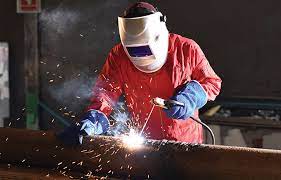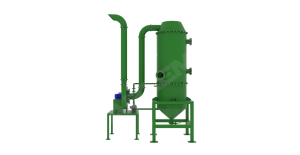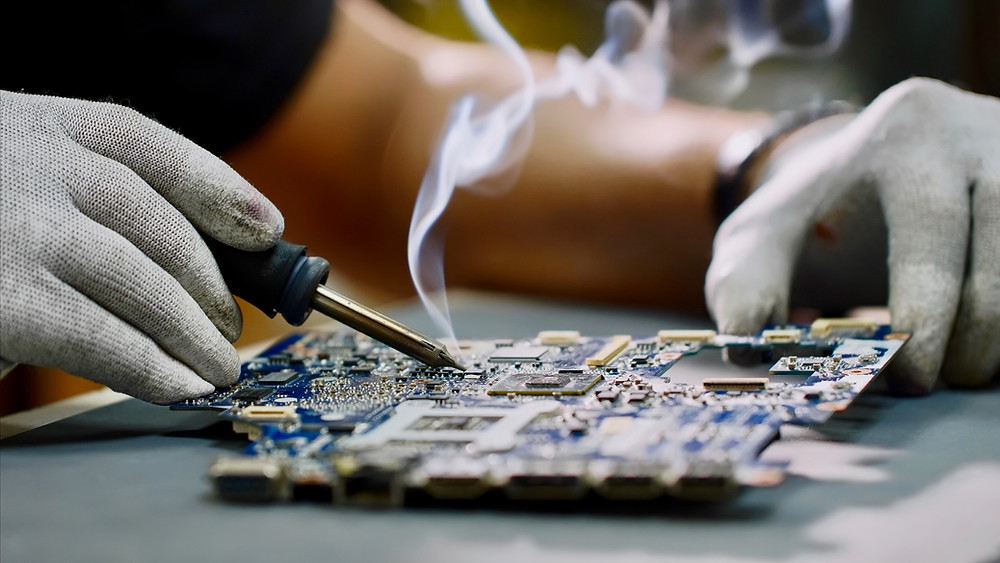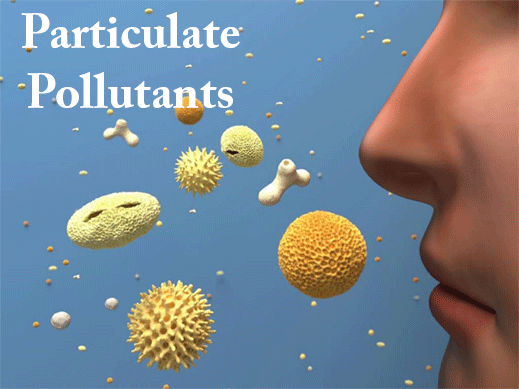Month: February 2022
SCRUBBER
Scrubber https://www.apzem.in
A scrubber or scrubber system is a system, that is used to removed harmful materials from industrial exhaust gases before they are released into the environment.
Spray Scrubber
Spray scrubber can be used to capture a particulate matter of size 2 microns and large particulates. It can be also remove gaseous pollutants. Apzem is a leading manufacturer of spray tower scrubber in India. Apzem’s wet spray scrubbers is incorporating standard design features and so it is extremely compact and can be easily customized based on the requirements.
Applications:
- Chemical industries
- Pulp & paper industries
- Petrochemical industries
- Steel making
- Corn Processing Facilities
- Food Manufacturing
- Pharmaceutical industries
A Devices called as a wet scrubbers trap suspended particles by direct contact with as spray of water or other liquid. In that effect, a scrubber washes the particulates out of the dirty airstream as they collide with and are entrained by the countless tiny droplets in the spray.
Working of Spray Scrubber
A scrubber is a cleaning installation whose main purpose is to neutralize harmful components in industrial air or waste gas streams. The removal of gas particles causing many problems from the gaseous stream during the process is necessary before disposing of the gases in an open air.
In some cases, the use of a gas scrubber may allow recovering a certain raw material after the treatment. A big advantage is the versatility of the gas scrubber in different areas. It includes the chemical industry, the pharmaceutical industry, and the surface treatment.
The installation functions by bringing the gas stream in contact with as washing liquid. Due to this contact, certain gaseous components are dissolved and remain in the water.
There is an transfer of the components from the gas phase to the liquid phase. This is a absorption process. The solubility of the elements in the liquid will determined to what extent the gaseous components dissolve into the liquid phase.
Thus it is a great importance to work with the correct fluid being as the absorption agent. Also besides the water, several organic or inorganic washing liquids can be also used for this purpose
In these causes, certain chemicals or micro-organisms are added to the washing liquid in order to convert or neutralize the dissolved gases.
When we use as scrubber in an optimal manner, we can achieve a very high removal efficiency of the harmful gas particles. Therefore, the fumes are released in the outside air are no longer damaging to the environment.
Purpose of Scrubbers
Scrubber systems are used as air pollution control devices that removed harmful particles, gases, or chemical byproducts from industrial exhaust streams. While not found on a many older industrial chimneys, new government regulations are requiring them to be added or constructed as an emissions control device.
Advantage
Scrubber can be classified by their use and the method they use to remove particulates. The main advantages of scrubbers is the continual use of the cheaper bunker fuel than low Sulphur fuel and thereby reducing the switching cost to an entirely new fuel system
A scriber is a hand tool used in metal work to mark lines on work pieces, prior to machining. The process of using a scriber is called as scribing, and is just part of the process of marking out.
Scrubber can be classified by their uses and the method they used to remove particulates. The main advantages of scrubbers is the continual use of the cheaper bunker fuel than low Sulphur fuel and thereby reducing the switching cost to an entirely new fuel system
Scrubber is a cleaning installation whose main purpose is to neutralize the harmful components in industrial air or waste gas stream. The removal of gas particles causing a many problems from the gas stream during the process is necessary before disposing of the gases in the open air.
Soldering Fume Extractor
Soldering Fume Extractor
solder : Solder is used by the assembly workers in many industries to make electrical connections and seal copper pipe during plumbing installations. It is typically available in a wire made from various metals with a core of flux on the inside. Soldering is accomplished by heating the two items to be connected with a soldering iron and touching the heated points with the solder, which melts, flows and solidifies to form a permanent connection. Flux helps to prevent the oxidation during the soldering Fume Extractor process.
Solder fumes
Solder fumes are composed of metal vapors from the solder and gas from the evaporated solder flux .Soldering melts metal alloys with low melting points to create a bond, releasing metal vapors into the air. When using an solder flux, the soldering irons are heats the solder flux to aid in the bond formation, turning the solder flux into a gaseous state.
This combination of the exposure to solder vapors and gases can cause the operator lasting health effects depending on the type of solder and the solder flux as well as duration the frequency of the application of Soldering Fume Extractor.
Fumes are generated during metal welding have toxic effects on the human body. The types and quantities of such effects depend on the density and duration of exposure time to the fumes. Moreover, the types of fumes generated during welding or Soldering is dependents on the electrodes or wires used. These fumes cover a wide spectrum from formaldehyde to metal fumes such as lead and Sternum.
Exposure to such a pollutants, particularly insufficient ventilation of workplaces increases the concentrations of fumes in the breathing air and hence can increase health risk factors.
Early symptoms of the fume exposure can include:
- Watering, irritated eyes
- Runny or Stuffy nose
- Throat Pain
- Coughing
- Wheezing
In addition to proper ventilation, employees must wear proper PPE to protect themselves from other soldering hazards. Protective clothing are such as a long-sleeved shirt, pants, and gloves prevents burns from splashes of hot solder. Protective eyewear, such as a safety glasses or goggles.
Effects of Soldering Fumes
- The dangers of carbon monoxide are very well documented and formaldehyde has been linked to causing serious breathing problems, has been linked to cancer, Amyotrophic Lateral Sclerosis (ALS), damage to the nervous system, nausea, vomiting, mood changes, depression, insomnia, etc. The list goes on.
Solid particulates are no matter how “non-toxic” or “clean” they are, are still foreign bodies in your lungs. The largest particulate in the solder fume is around 10 microns and the smallest is around 0.3 microns. The average human hair is around an 100 microns and human eyes can see below 30 microns unaided.
This means that the solid particles are fine dust, basically are small enough to pass into your lungs into the soft tissues and gas exchange chambers. Here it becomes lodged, and here it causes irreparable damage to your lungs.
Interstitial Lung Diseases (ILD’s) are a common effect of long-term exposure to dust particles that get into the deep workings of your lungs.
Soldering fumes are occupational health hazard caused by heavy metal vapors that can be breathed in.
- Proper ventilation throughout the shop in key.
- Fume extractors should be always used at soldering workstations.
- Personal protective equipment (PPE) will prevent contact with the heavy metals that could cause toxicity.
Soldering Fume Extractor – Safety Steps : Wear safety glasses or goggles whenever you solder a spatter of 370 °F molten metal or 300 °F boiling flux in the eye will ruin your day, week, etc. Use an fume extractor or noxious organic fume mask to keep the vaporized flux out of your lungs.
First Aid
-
- Any burns should be immersed in cold water for 15 minutes right away.
- If they wound is deep or extensive, seek medical attention. otherwise, cover it with a plaster or band aid.
https://www.apzem.com/india/products/soldering-fume-extractor.html
Welding Fume Health EFFECTS
Welding Fume Extractor – Welding
Welding metals containing cadmium, chromium, lead, manganese, and nickel poses health risks to anyone who breathes the air when these fumes are present. The Environmental Protection Agency (EPA) has new requirements to reduce air pollution from compounds of these such metals.
Welding Fume

.https://www.apzem.in/index.php/product-category/fume-extractor/welding
These compounds are emitted into the air from various operations at metal fabrication, finishing plants. Exposure to the different types of welding fumes may result in different health effects. If a welder inhales gases, fumes and Vapors in large quantities over long periods, this may have a negative effect on his health.
Welding Gases
Vapors or fumes can come from coating and residues on metal being welded. Some ingredients in coatings can have toxic effect. These ingredients include: metalworking fluids, oils, and rust preventatives.
Zinc on galvanized steel (vaporizes, releasing zinc oxide fumes) Cadmium plating Chromate shielding gases such as carbon dioxide, argon, helium, etc. fuel gases such as acetylene, propane, butane, etc. oxygen used with fuel gases and also in small amounts of some shielding gas mixtures.
Welding Fume Effects
- Irritation of the welding tract Metal fume fever Sideris chronic inflammation of the lungs An increased risk of lung cancer Some of the components of welding fume, such as oxides of chromium, nickel, cadmium, and manganese are known as suspected carcinoma.
- A stainless steel welding fume has a higher content of these alloying elements like (as well as carbon) than mild steel welding fume does the former was thought to be significantly more hazardous. What the IARC discovered in that while mild steel welding fume contains much lower concentrations of these elements the concentrations is still potent enough to cause cancer in humans.
- The nose typically filters and collects much to the smoke, fumes, and grinding dust welding machines create. But some welding fume particles is very small in size and can pass through the nose, the sinus cavity, down the throat, and into the lungs.
- Most people never even notice an irritation. After a years of inhaling welding fumes, you begin to exhibit signs. Cause The most plausible theory involves an immune reaction that occurs when inhaled metal oxide fumes injure to cells lining the airways.
- This is thought to modify proteins in the lung. The modified proteins is then absorbed into the bloodstream, where they act as a allergens. It is usually associated with inhaling zinc fumes, although some believe that copper and magnesium can also cause the problem.
- Welding joins materials together by melting of a metal work piece along with a filler. Metal to form the strong joint. The welding process produces visible smoke that It contains harmful metal fumes and gas by-products. This fact sheet discusses about welding. operations, applicable OSHA standards, and suggestions for protecting welders and Coworkers are protected from exposure to the many hazardous substances in welding fume.
- Gases and fine particles in welding fume can cause dryness of the throat, coughing or tightness in the chest. This effects tend to be short-lived.
Welding Fume Extractor
Welding fumes are combination of various metals. For instance, mild steels are mostly iron, but it also contains a manganese, which has received a great deal of attention recently in terms of its effect on health. Stainless steels are also contains iron, as well as nickel and chromium. Simple steps can minimize exposure. Use any provided ventilation system (Welding Fume Extractor). Don’t stand in front of the air flow pushing fumes away from your workspace. Position your face as far from the fumes as possible. Use an small cooling fan if no air flow moves fumes from your workspace. https://www.apzem.in




